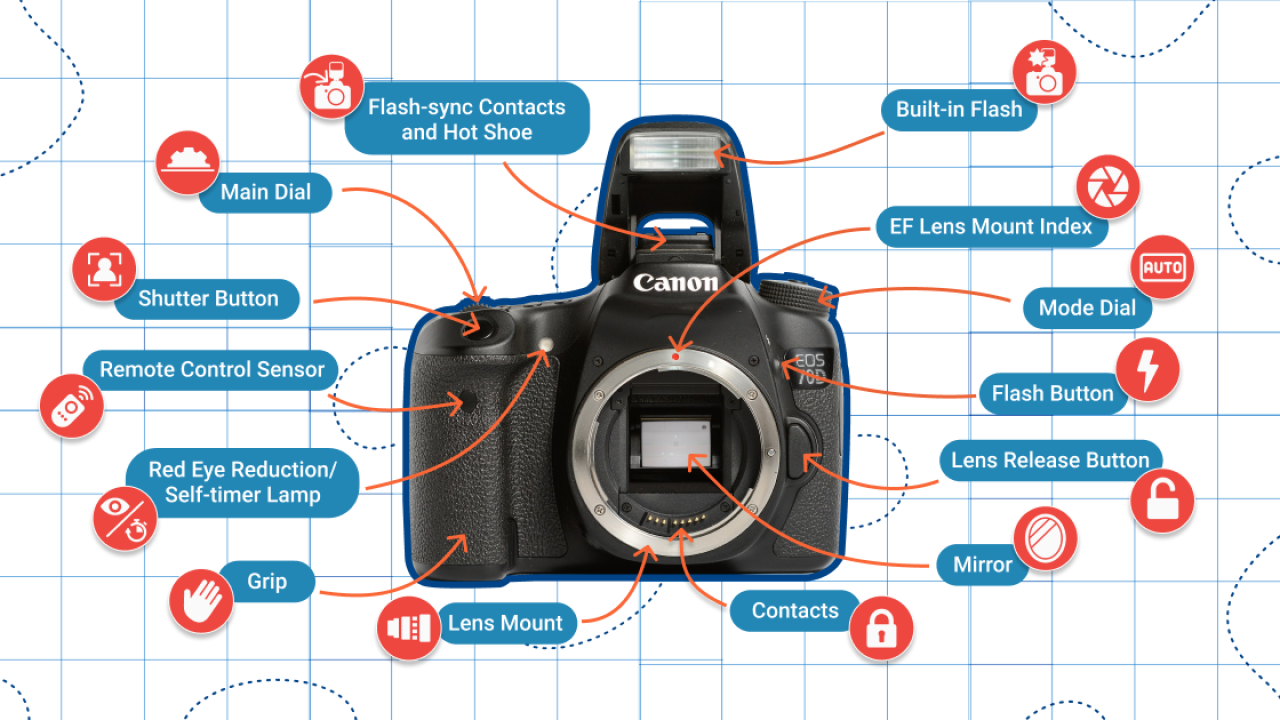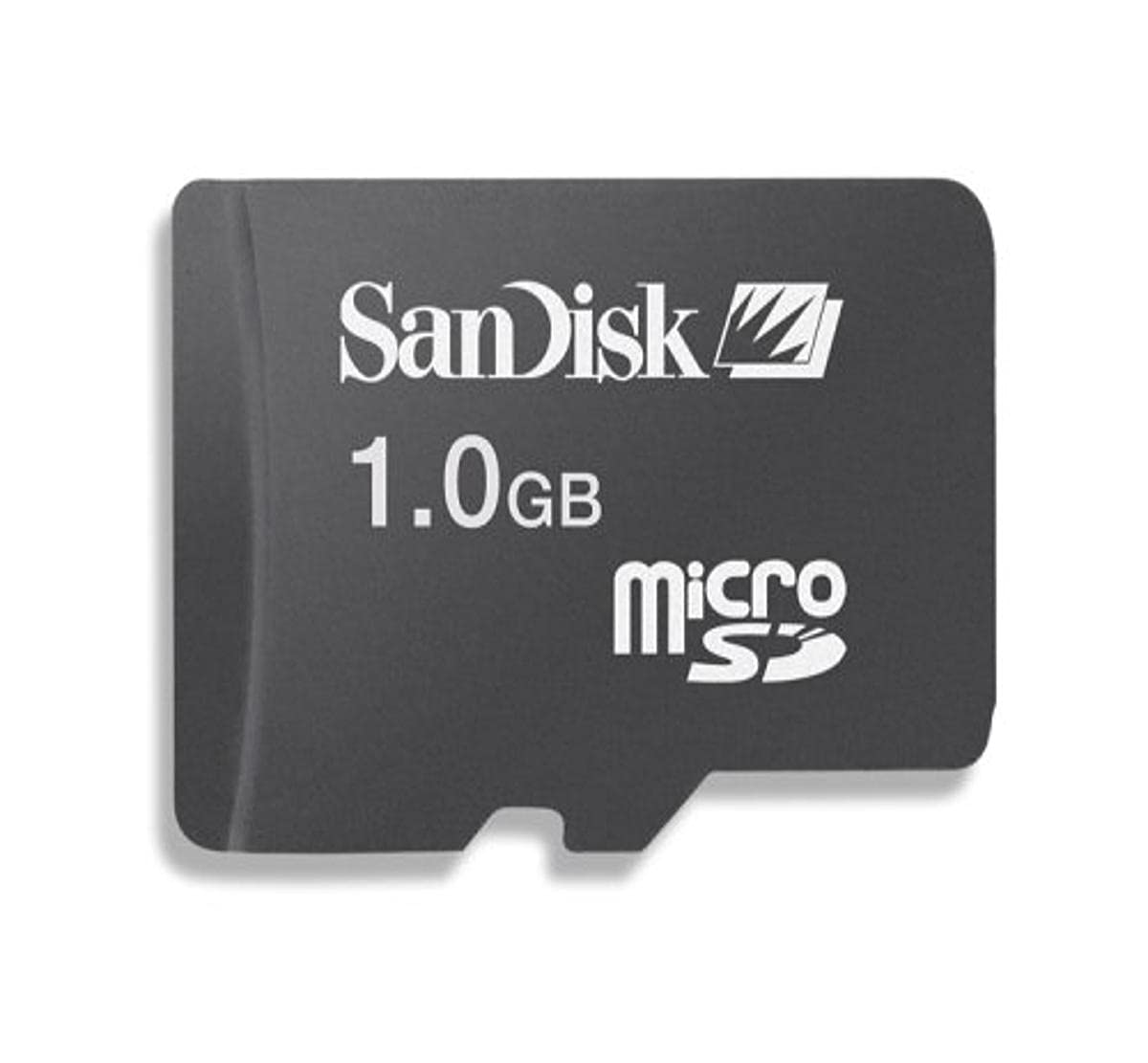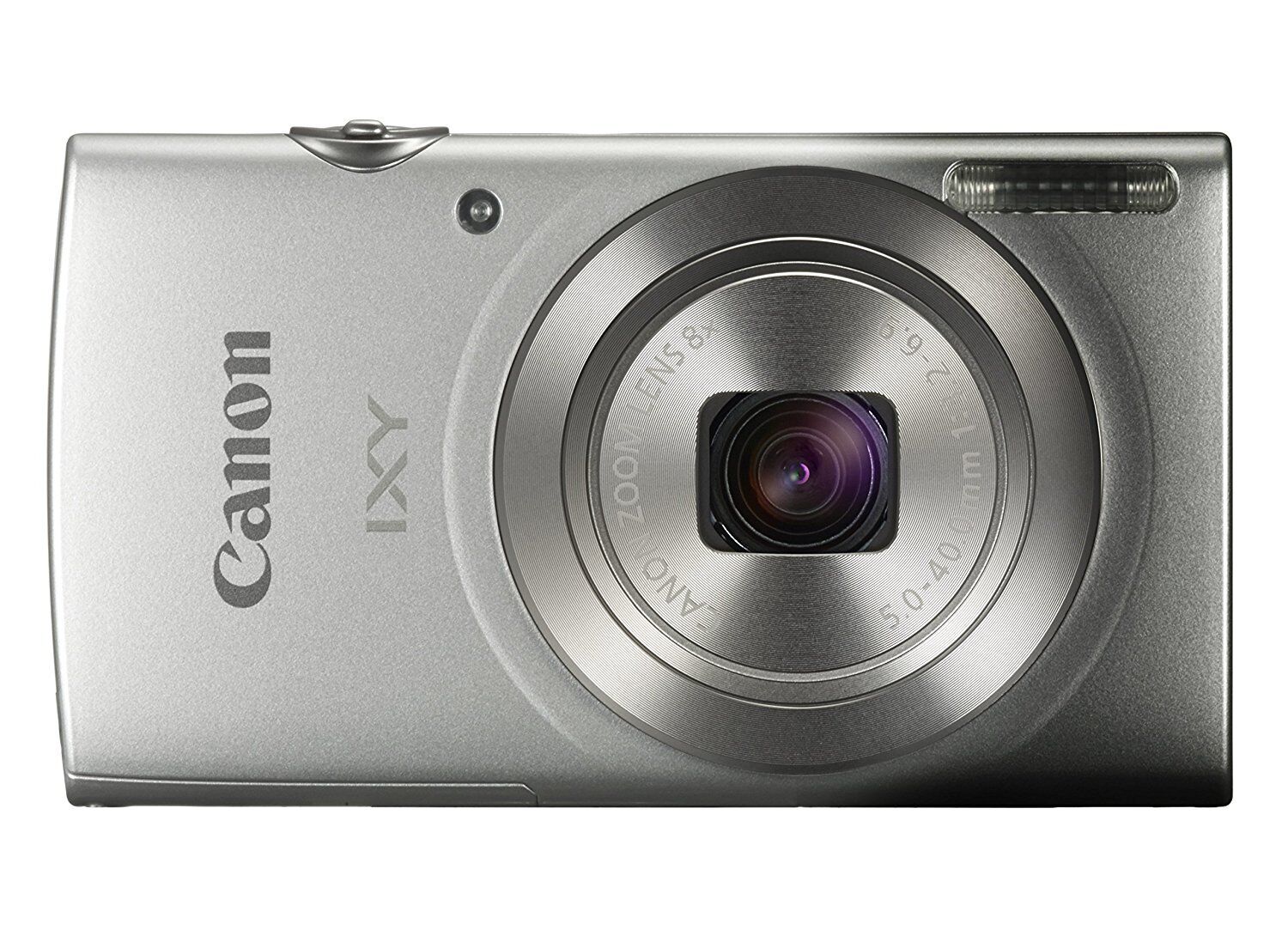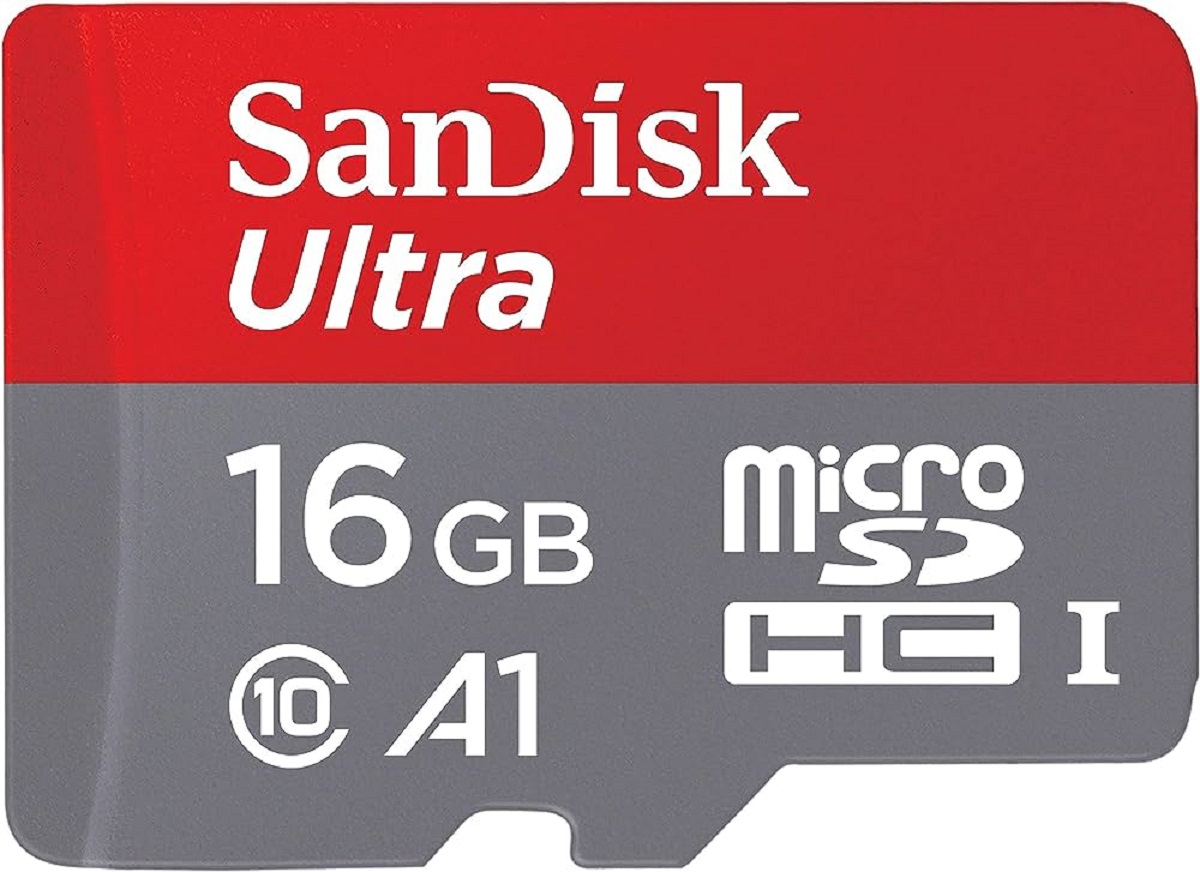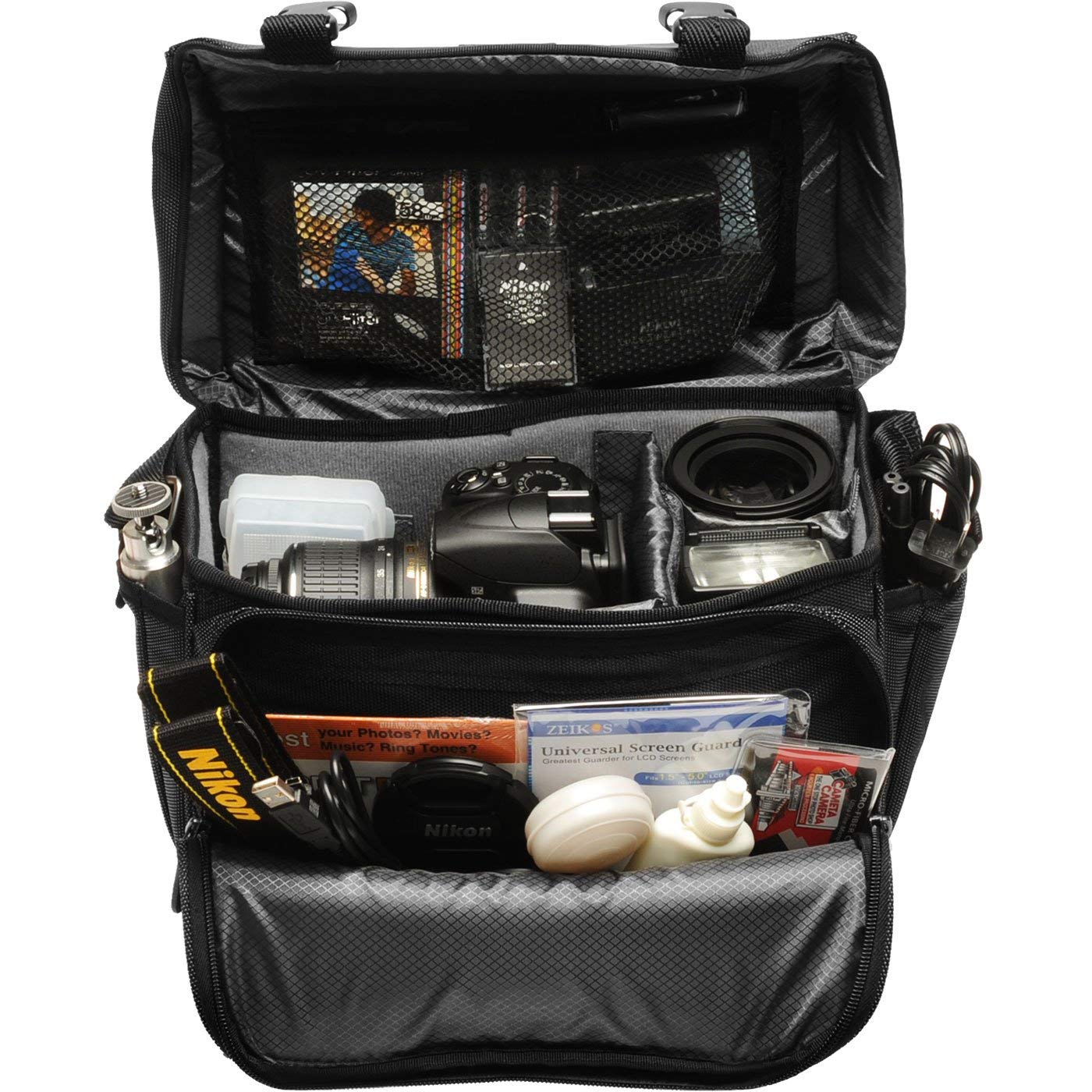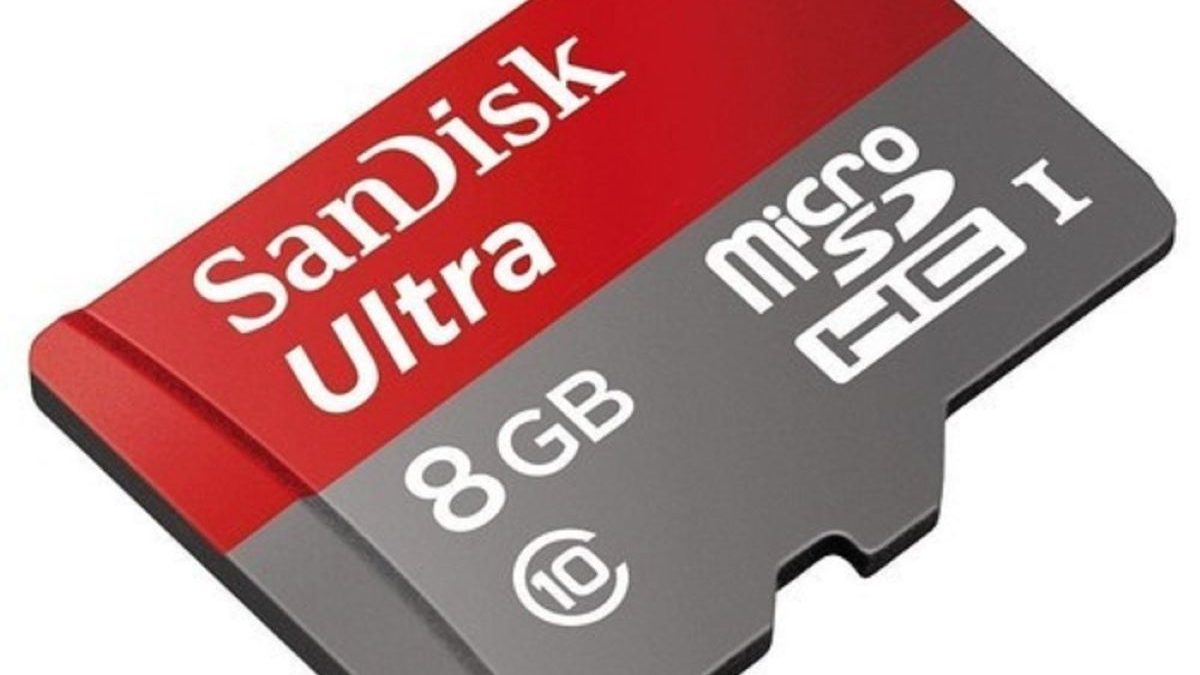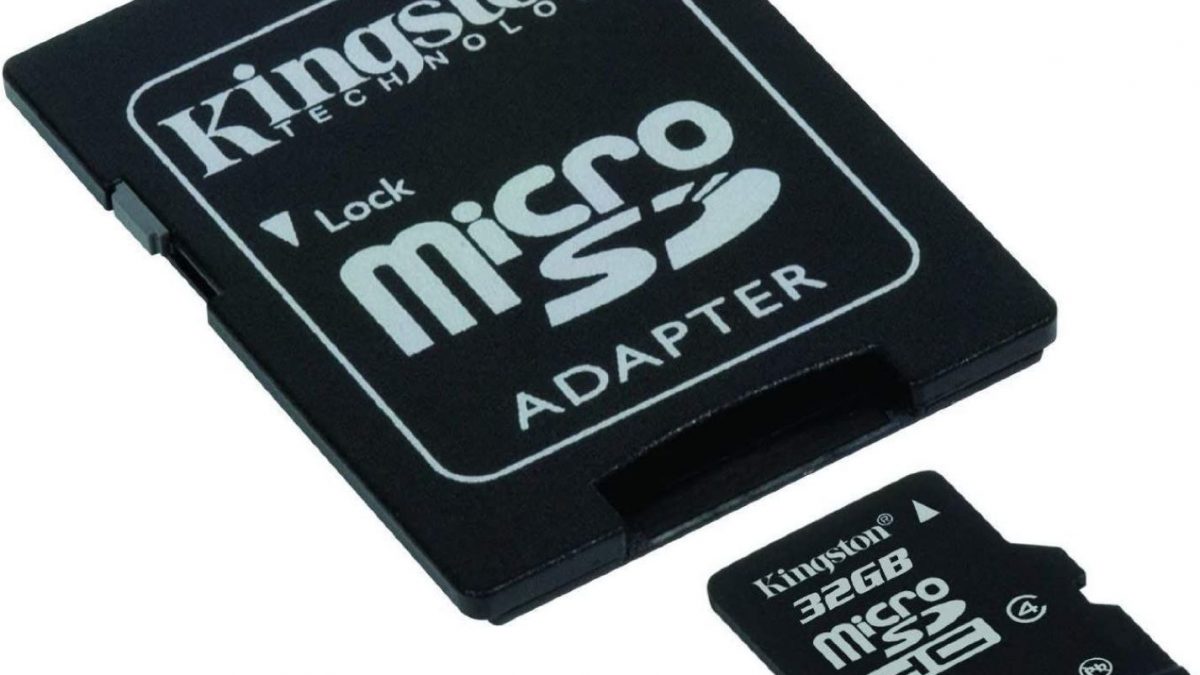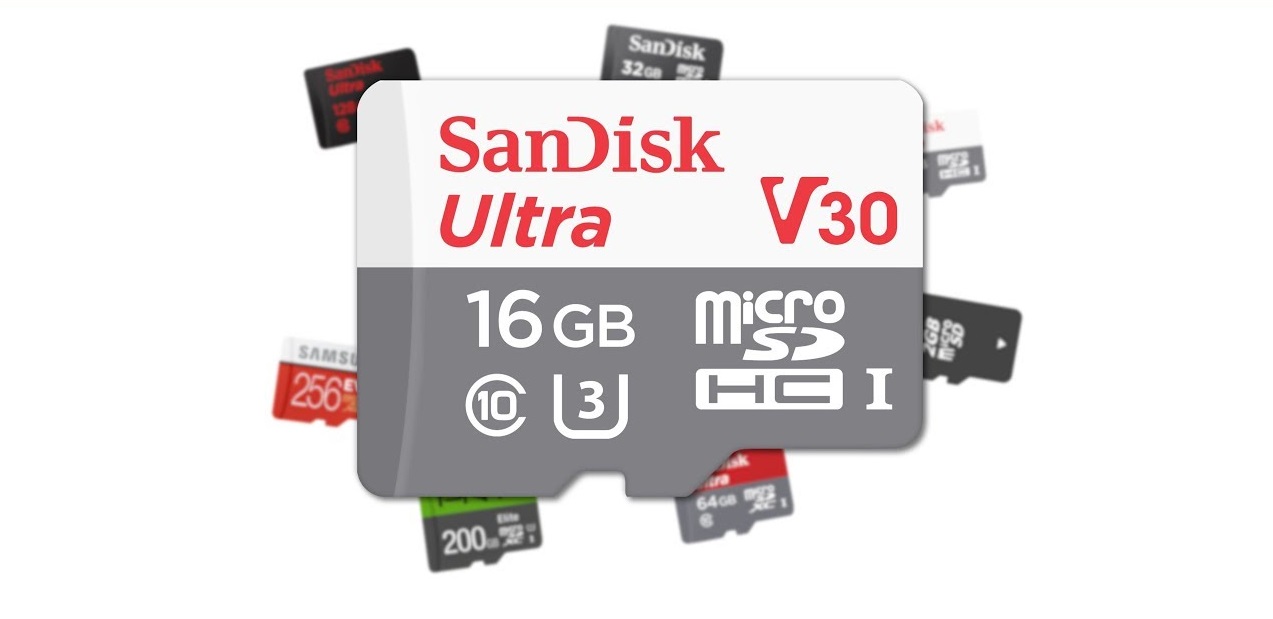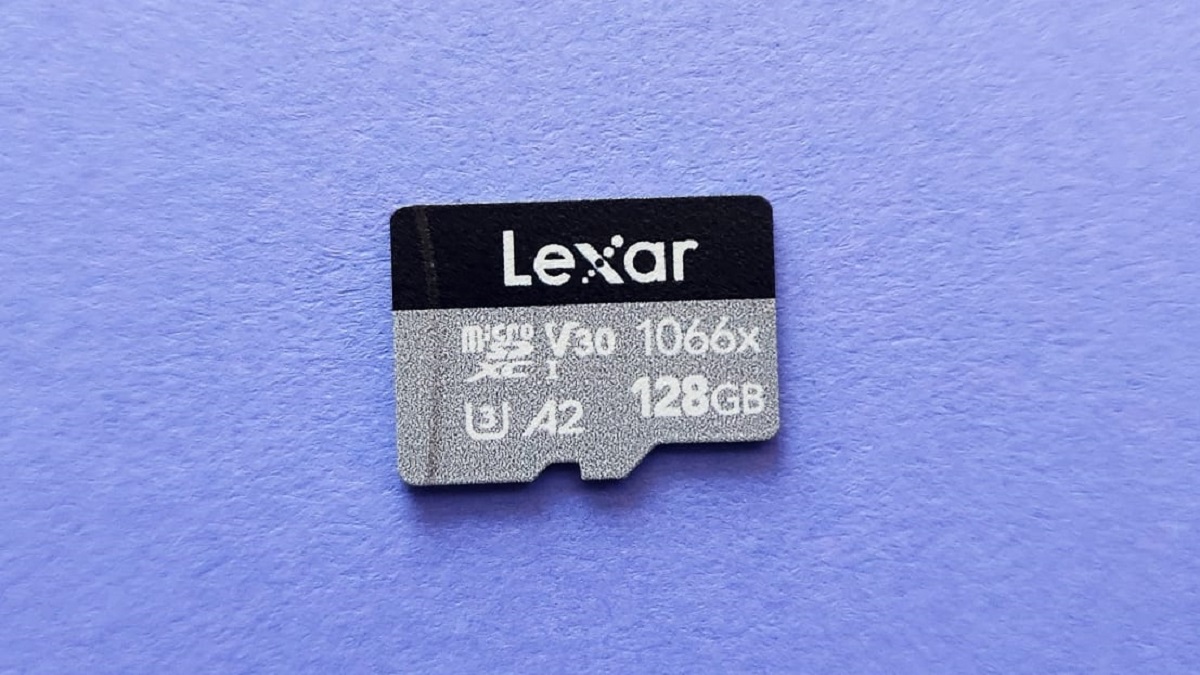Introduction
When it comes to digital cameras, one may wonder where all those stunning photos and videos are stored. Understanding the storage options available in digital cameras is essential for photographers and enthusiasts alike. In this article, we will explore the various ways in which digital cameras store information.
Digital cameras feature built-in memory and external memory card slots to expand their storage capacity. Depending on the camera model and brand, different types of memory cards may be supported. Let’s dive into the details of these storage options to get a clearer picture.
Before delving into memory card options, it’s important to note that some digital cameras come with built-in memory. This internal storage allows users to capture a limited number of photos and videos directly on the camera. However, the capacity of built-in memory is often limited, so it’s advisable to utilize external memory cards for sufficient storage.
Now let’s explore the world of memory card options available for digital cameras.
Built-in Memory
Built-in memory, also known as internal memory, is a storage option that comes with some digital cameras. This memory is integrated into the camera itself and allows users to capture and store photos and videos directly on the device.
The capacity of built-in memory can vary depending on the camera model, with some offering a few gigabytes (GB) of storage, while others may have tens or even hundreds of gigabytes. However, compared to memory cards, the storage capacity of built-in memory is often limited.
While built-in memory can be convenient for quickly snapping a few shots, it is usually recommended to utilize external memory cards for extended storage. This is especially true if you plan on capturing a large number of high-resolution photos or recording high-definition videos, which require more storage space.
It’s worth noting that not all digital cameras come equipped with built-in memory. Some entry-level models may rely solely on external memory cards for storage. Therefore, before purchasing a camera, it’s essential to check whether it has built-in memory or relies solely on external storage.
Despite its limitations, built-in memory can be useful for scenarios where you may not have a memory card at hand or need to quickly transfer a few images to your computer. However, for long-term storage and optimal performance, utilizing external memory cards is highly recommended.
In the next sections, we will explore the various types of memory cards available for digital cameras, each offering different storage capacities and performance levels, ensuring that you never run out of space to capture those precious moments.
Memory Card Options
Memory cards are the most common and versatile method of expanding the storage capacity of a digital camera. These small, portable devices are available in various formats and offer different storage capacities and speeds. Let’s take a closer look at the most popular memory card options for digital cameras.
SD Cards: Secure Digital (SD) cards are widely used in digital cameras due to their small size and compatibility with a wide range of devices. They come in different versions, including SD, SDHC (High Capacity), and SDXC (Extended Capacity). SD cards are available in varying storage capacities, ranging from a few gigabytes to several terabytes. They are an excellent choice for casual photographers and those who need to capture a moderate number of photos and videos.
CompactFlash Cards: CompactFlash (CF) cards are larger in size compared to SD cards but offer faster read and write speeds. They are commonly used in professional-grade DSLR cameras that require high-performance storage for capturing continuous burst shots and recording high-quality videos. CF cards are available in different capacities, with some models offering storage space of up to several hundred gigabytes.
XQD Cards: XQD cards are relatively new to the market and are known for their lightning-fast read and write speeds. These high-performance memory cards are designed for professional photographers and videographers who demand extremely fast storage to keep up with rapid-fire shooting and high-bitrate video recording. With capacities ranging from 32GB to 640GB, XQD cards provide ample storage space for high-resolution content.
MicroSD Cards: MicroSD cards are compact versions of SD cards and are often used in smartphones and action cameras. However, many digital cameras now have microSD card slots as well. MicroSD cards are available in various capacities and can be used with an adapter to fit into regular SD card slots, increasing their versatility.
CFast Cards: CFast cards are an evolution of CompactFlash cards and offer even higher read and write speeds. They are primarily used in high-end professional cinema cameras, providing the necessary storage performance for recording uncompressed and raw video formats. CFast cards come in capacities ranging from 64GB up to several terabytes.
These are just a few of the memory card options available for digital cameras. Other less common formats include Memory Stick, XD-Picture Card, and P2 cards, which are usually specific to certain camera brands or professional applications.
Now that we have explored the various memory card options, the next sections will cover additional storage options that are sometimes found in digital cameras.
SD Cards
Secure Digital (SD) cards are one of the most popular and widely used memory card options for digital cameras. They are known for their small size, versatility, and compatibility with a wide range of devices.
SD cards come in different versions, including SD, SDHC (High Capacity), and SDXC (Extended Capacity). Each version has its own maximum storage capacity. SD cards are available in various storage capacities, ranging from a few gigabytes (GB) to several terabytes (TB).
SD cards are a great choice for casual photographers and those who do not require extensive storage capacity. They are suitable for capturing a moderate number of photos and videos. The storage capacity of SD cards can vary depending on the camera model and the file sizes of the content being captured.
One advantage of SD cards is their widespread compatibility. Most digital cameras, both compact and DSLR models, feature an SD card slot. Additionally, SD cards can be used with other devices such as laptops, tablets, and card readers, making it easy to transfer and access the stored content.
When choosing an SD card, it’s important to consider the speed class. The speed class refers to the minimum write speed of the card, which is crucial for capturing high-resolution photos and recording high-definition videos. The speed class is denoted by a number inside a U-shaped symbol, such as U1 or U3. Higher numbers indicate faster write speeds.
For professionals and enthusiasts who frequently capture burst shots or record 4K videos, it’s advisable to choose SD cards with higher speed classes to ensure smooth and uninterrupted performance.
Additionally, some SD cards come with additional features like built-in Wi-Fi or NFC capabilities. These features enable wireless transfer of photos and videos to other devices or directly to social media platforms, providing convenient and seamless sharing options.
In summary, SD cards are a versatile and widely compatible memory card option for digital cameras. They come in various versions and storage capacities, making them suitable for different photography needs. When choosing an SD card, consider the storage capacity, speed class, and any additional features that may enhance your photography experience.
CompactFlash Cards
CompactFlash (CF) cards are a type of memory card specifically designed for professional-grade digital cameras. These cards are known for their larger size compared to SD cards, as well as their faster read and write speeds.
CF cards are commonly used in high-end DSLR cameras that require fast and reliable storage to capture continuous burst shots and record high-quality videos. The larger physical size of CF cards allows for more robust construction, making them ideal for handling the demands of professional photography.
One of the key advantages of CompactFlash cards is their faster data transfer rates. The high-speed interface of CF cards enables quick and efficient storage operations, ensuring that photographers can capture and save images rapidly. This is particularly beneficial when shooting in continuous mode or capturing fast-moving subjects.
CF cards are available in various storage capacities, ranging from a few gigabytes (GB) to several hundred gigabytes (GB). The larger storage capacities of CF cards make them well-suited for photographers who capture a significant amount of high-resolution images or record lengthy video footage.
Another advantage of CompactFlash cards is their durability. The larger physical size allows for more rugged construction, making these cards resistant to shocks, vibrations, and extreme temperatures. This makes them ideal for use in demanding environments such as outdoor photography, sports photography, and photojournalism.
It’s important to note that CF cards require a dedicated CF card slot on the camera. Many professional-grade DSLR cameras come equipped with CF card slots to accommodate the larger cards. However, it’s essential to check the camera’s specifications to ensure compatibility with CF cards.
While CompactFlash cards have been a popular choice among professional photographers for many years, their usage has declined with the emergence of smaller and faster memory card formats like SD and XQD. Nevertheless, many photographers still prefer CF cards for their reliability, durability, and fast write speeds.
In summary, CompactFlash cards are a robust and high-performance memory card option, especially suited for professional photographers who require fast data transfer rates and durable storage. When choosing a CF card, consider the storage capacity, write speed, and the camera’s compatibility to ensure optimal performance and reliability.
XQD Cards
XQD cards are a relatively new and advanced type of memory card designed for high-performance digital cameras and professional photography applications. They are known for their lightning-fast read and write speeds, making them a preferred choice for photographers who demand rapid data transfer and storage capabilities.
One of the key advantages of XQD cards is their exceptional speed. These cards utilize a high-speed interface that enables faster data transfer rates compared to traditional memory card formats. The increased speed of XQD cards allows for quick and efficient storage operations, such as capturing high-resolution images in rapid succession and recording high-bitrate video footage without buffering or interruptions.
Another advantage of XQD cards is their large storage capacity. These cards are available in various capacities, starting from 32GB and going up to a massive 640GB. The ample storage space of XQD cards makes them ideal for professional photographers who capture a significant amount of data and require extensive storage capacity to store their high-resolution photos and videos.
XQD cards are built with durability in mind. They are designed to withstand rugged usage and adverse shooting conditions. The card’s robust construction provides resistance to shock, vibration, and extreme temperatures, ensuring reliable performance even in challenging environments, such as outdoor and action photography.
It’s important to note that XQD cards have a unique card format and require a specialized XQD card slot in the camera. Not all cameras are compatible with XQD cards, so photographers must check their camera’s specifications before investing in these cards. However, the popularity of XQD cards has been growing, and many professional-grade DSLRs and mirrorless cameras now feature XQD card slots.
In addition to their excellent performance, XQD cards often come with advanced features such as robust error correction, wear leveling, and power protection mechanisms. These features further enhance the integrity and reliability of stored data, reducing the risk of data loss or corruption.
It’s worth mentioning that XQD cards are a proprietary format that was developed by Sony in collaboration with Nikon. As a result, there are limited brands that manufacture XQD cards. However, this has changed in recent years, with more companies joining the market and offering XQD cards with competitive specifications.
In summary, XQD cards are a high-performance and reliable memory card option primarily used in professional photography applications. They offer exceptional speed, large storage capacities, and robust durability. When considering XQD cards, it’s important to ensure compatibility with your camera and to evaluate factors such as storage capacity, speed, and brand reputation to make an informed decision.
MicroSD Cards
MicroSD cards are small and versatile memory cards that have gained popularity in recent years. Originally designed for use in smartphones and other portable devices, MicroSD cards are now commonly used in digital cameras as well. They offer a convenient storage solution for those seeking a compact and portable memory card option.
MicroSD cards are smaller in size compared to regular SD cards and are typically used in devices with limited space, such as action cameras, drones, and compact cameras. Despite their small size, MicroSD cards can still provide significant storage capacity, with options ranging from a few gigabytes (GB) to several terabytes (TB).
One of the advantages of MicroSD cards is their versatility. They can be used with a wide range of devices, thanks to the availability of MicroSD to regular SD card adapters. This allows photographers to easily transfer their MicroSD card from their camera to a laptop, card reader, or another device that supports SD cards.
MicroSD cards come in different speed classes, denoted by a number inside a U-shaped symbol, such as U1 or U3. These speed classes indicate the minimum write speed of the card. Higher numbers correspond to faster write speeds, which are particularly beneficial when capturing high-resolution photos or recording 4K videos.
When choosing a MicroSD card for a digital camera, it’s crucial to consider the requirements of the camera model and the type of content being captured. For instance, if you frequently capture fast-action shots or record high-bitrate videos, opting for a higher speed class MicroSD card would ensure smooth and seamless performance.
MicroSD cards are known for their affordability, making them a budget-friendly option for photographers and videographers. They offer a competitive price-per-gigabyte compared to other memory card formats, making them an attractive choice for those on a tighter budget.
It’s important to note that MicroSD cards may have some limitations compared to larger memory card formats. Due to their smaller size, MicroSD cards may have slightly slower read and write speeds compared to their full-sized counterparts. However, advancements in technology have diminished this gap, and many high-performance MicroSD cards now offer comparable speeds to larger cards.
In summary, MicroSD cards provide a compact and versatile storage solution for digital cameras. They offer various storage capacities, speed class options, and affordability. When selecting a MicroSD card, consider the specific requirements of your camera, such as storage capacity, speed class, and any brand or model recommendations by the camera manufacturer.
CFast Cards
CFast cards are an advanced type of memory card designed specifically for professional-grade digital cameras and video cameras. These cards offer exceptionally fast read and write speeds, making them an ideal storage option for photographers and videographers who demand high-performance capabilities.
One of the key advantages of CFast cards is their lightning-fast data transfer rates. They utilize a high-speed interface that enables rapid and efficient storage operations. With these high read and write speeds, CFast cards can handle continuous burst shooting, high-resolution image capture, and the recording of high-bitrate video formats with ease.
CFast cards are available in various storage capacities, providing ample space for storing extensive collections of high-resolution photos and lengthy video footage. They are particularly favored by professionals who work with high-resolution cameras and require large amounts of storage space to accommodate their data-intensive projects.
In addition to their impressive speed and capacity, CFast cards offer robust construction and durability. They are built to withstand the demands of professional photography and videography, with resistance to shocks, vibrations, and extreme temperatures. This durability ensures that CFast cards can reliably handle the rigors of fieldwork and challenging shooting environments.
It’s important to note that CFast cards have a different physical form factor compared to other memory card formats. They are designed to fit into CFast card slots, which are more commonly found on high-end professional cinema cameras. While some cameras may offer compatibility with CFast cards through the use of adapters, it’s crucial to check the camera’s specifications and confirm its compatibility before investing in CFast cards.
Due to their advanced technology and high-performance capabilities, CFast cards are typically priced at a premium compared to other memory card formats. This makes them a favored choice for professionals who require the fastest storage speeds and most reliable performance for their projects.
It’s worth mentioning that CFast cards have started to face competition from newer formats such as CFexpress, which offer even faster speeds and larger capacities. CFexpress cards are backward-compatible with CFast slots, but it’s important to check the camera’s compatibility and choose the appropriate format for maximum performance.
In summary, CFast cards are a high-performance memory card solution primarily used in professional photography and videography. They offer lightning-fast data transfer rates, large storage capacities, and durability, making them an optimal choice for professionals who demand the best storage performance for their high-resolution projects. When considering CFast cards, be sure to check your camera’s compatibility and evaluate factors such as storage capacity, speed, and price to ensure optimal performance and value.
Other Storage Options
In addition to built-in memory and various memory card formats, there are other storage options available in some digital cameras. These options provide additional flexibility and convenience for managing and storing your photos and videos.
Internal Hard Drive: Some professional-grade digital cameras feature an internal hard drive as a storage option. These cameras are equipped with a built-in hard drive that offers substantial storage capacity, typically ranging from several hundred gigabytes to multiple terabytes. Internal hard drives provide convenient and ample storage space for capturing a large volume of high-resolution photos or recording extended video footage without the need for external memory cards.
Solid State Drive (SSD): SSDs have become increasingly popular in the photography world due to their high performance and reliability. Some digital cameras now offer an SSD option, which provides fast read and write speeds, ensuring smooth and efficient data transfer. SSDs are known for their durability, low power consumption, and resistance to shock and vibration. However, it’s important to note that cameras with SSD storage are still relatively rare and more commonly found in high-end cinema cameras or specialized equipment.
Cloud Storage: With the advancement of technology and internet connectivity, cloud storage has become an appealing option for photographers. Some digital cameras offer built-in Wi-Fi or wireless connectivity, allowing users to transfer their photos and videos directly to cloud storage platforms. Cloud storage provides the convenience of accessing your files from anywhere with an internet connection, and it offers the advantage of backup and redundancy, ensuring that your precious memories are protected even if the camera is lost or damaged.
While these storage options provide additional flexibility, it’s important to consider the implications and limitations of each. Internal hard drives and SSDs may increase the weight and bulk of the camera, and their reliance on internal components means that a failure could result in the loss of all stored data. Cloud storage, on the other hand, requires a stable internet connection and may involve additional costs for large amounts of storage space or prolonged usage.
Ultimately, the choice of storage option will depend on your specific needs, preferences, and the capabilities of your camera. It’s important to carefully evaluate the storage options available to ensure that they align with your photography workflow, whether it’s capturing thousands of high-resolution images, recording lengthy video projects, or prioritizing convenience and remote access to your files.
In the next sections, we will explore additional considerations and best practices for managing and optimizing your digital camera’s storage.
Internal Hard Drive
Some professional-grade digital cameras are equipped with an internal hard drive as a storage option. Unlike external memory cards, internal hard drives are integrated directly into the camera, providing a convenient and extensive storage solution.
Internal hard drives in digital cameras offer substantial storage capacity, typically ranging from several hundred gigabytes to multiple terabytes. This ample storage space allows photographers to capture a large volume of high-resolution photos or record extended video footage without the need for external memory cards.
One of the advantages of internal hard drives is the convenience they offer. With a built-in storage solution, photographers don’t have to worry about carrying multiple memory cards or constantly swapping them out during a shoot. Additionally, having all your media stored internally can streamline your workflow, making it easier to access, manage, and review your images and videos directly on the camera.
Internal hard drives also provide faster read and write speeds compared to some external memory card options. This can be beneficial when capturing high-speed burst shots or recording high-bitrate video formats, as the camera can quickly process and store data without any bottlenecks due to slower memory card speeds.
However, it’s important to note that there are some considerations and limitations when utilizing the internal hard drive of a digital camera. First, the size and weight of the camera may be increased due to the inclusion of the internal hard drive. This may affect the portability and handling of the camera, especially when shooting on the go.
Additionally, relying solely on an internal hard drive means that all your media is stored in a single device. If the internal drive fails or gets damaged, you could risk losing all your stored data. Therefore, it’s important to regularly back up your files to external storage devices or cloud storage to ensure data redundancy and minimize the risk of data loss.
It’s worth mentioning that internal hard drives are more commonly found in higher-end professional cameras rather than consumer-level models. Therefore, if internal storage is an essential feature for your photography needs, it’s important to research and select a camera model that offers this option. Be sure to consider the storage capacity, the ability to transfer files to external devices, and the backup options available with the camera.
In summary, internal hard drives offer convenience and extensive storage capacity within the camera itself. They eliminate the need for external memory cards and provide faster read and write speeds. However, photographers should be aware of the potential risks associated with relying solely on internal storage, such as the increased weight of the camera and the need for regular data backup to mitigate the risk of data loss.
Solid State Drive (SSD)
Some digital cameras now offer solid-state drives (SSDs) as an alternative storage option. SSDs have gained popularity in recent years due to their high performance, reliability, and durability.
SSDs, unlike traditional hard disk drives (HDDs), do not contain any mechanical components, which makes them more resistant to physical shocks and vibrations. This makes SSDs well-suited for photography applications, especially in challenging shooting environments that may involve movement or outdoor conditions.
One of the key advantages of SSDs is their fast read and write speeds. The absence of moving parts allows SSDs to access and transfer data much more quickly than HDDs. This translates into faster file transfers, smoother operation when accessing images or videos, and more responsive performance overall.
In addition to speed, SSDs also offer benefits in terms of power consumption. SSDs generally consume less power than traditional HDDs, resulting in extended battery life for cameras. This is particularly advantageous for photographers who engage in long photo shoots or need to record extended video clips.
Another advantage of SSDs is their compact size and lightweight construction. SSDs occupy less physical space and are generally smaller than HDDs, which is beneficial for digital cameras that have limited internal space. Additionally, the lighter weight of SSDs contributes to better overall balance and handling of the camera, making it easier to carry and operate for extended periods.
It’s important to note that not all digital cameras come with the option of an SSD. SSD-equipped cameras are more commonly found in high-end models or specialized equipment intended for professional photographers or videographers. However, as technology advances and SSDs become more prevalent, their availability may increase across a wider range of camera models.
When considering using an SSD as a storage option, it’s crucial to assess the storage capacity you require and ensure that the camera offers sufficient internal storage space or the ability to swap out or expand the SSD. Since SSDs often have limited storage capacities compared to traditional HDDs, it may be necessary to offload data to external storage devices or cloud storage periodically.
In summary, SSDs offer several advantages over traditional hard disk drives, including fast read and write speeds, durability, lower power consumption, and compact size. As an emerging technology in the field of digital cameras, SSDs provide a promising storage option for photographers looking to maximize performance and reliability in their shooting experiences.
Cloud Storage
Cloud storage has revolutionized the way digital content is stored and accessed, including for photographers. Some digital cameras now offer built-in Wi-Fi or wireless connectivity, allowing users to transfer their photos and videos directly to cloud storage platforms.
Cloud storage provides a convenient and flexible solution for managing and accessing your media files. It allows you to upload your photos and videos to remote servers, where they are stored securely and can be accessed from any device with an internet connection.
One of the key advantages of cloud storage is the convenience of remote access to your files. With your data stored in the cloud, you can easily view and manage your photos and videos from any computer, laptop, tablet, or smartphone, regardless of your physical location. This can be particularly useful when you need to quickly share or review your images on the go.
Furthermore, cloud storage provides an additional layer of security for your files. In the event that your camera is lost, damaged, or stolen, you can rest assured that your precious memories are safely stored in the cloud. This ensures that your photos and videos are protected and can be retrieved even if your physical camera or memory cards are no longer accessible.
Cloud storage platforms also offer the advantage of backup and redundancy. Your data is typically stored on multiple servers across different geographic locations, ensuring that even in the event of a server failure or technical issue, your files remain secure and accessible.
However, it’s important to note that using cloud storage for your photography needs does come with some considerations. Firstly, you will need a stable internet connection to upload and access your files. This can be a limitation in remote or rural areas with limited connectivity.
Additionally, cloud storage services often have storage limits, and depending on the amount of data you need to store, you may need to subscribe to a higher-tier plan or pay additional fees for increased storage capacity. It’s important to evaluate the pricing structure, storage options, and features offered by different cloud storage providers to find the best fit for your needs.
Lastly, as with any digital storage method, data security and privacy are important considerations. It’s advisable to choose a reputable cloud storage provider that implements robust security measures, including data encryption and two-factor authentication, to protect your files from unauthorized access.
In summary, cloud storage offers a convenient and accessible means of storing and managing your photography files. It provides remote access to your images and videos, enhances data security, and offers backup and redundancy. However, it’s crucial to consider factors such as internet connectivity, storage limits, and data security when utilizing cloud storage for your photography needs.
Conclusion
Understanding the various storage options available in digital cameras is crucial for photographers and enthusiasts alike. From built-in memory and memory cards to internal hard drives, SSDs, and cloud storage, each option offers different advantages and considerations to cater to different photography needs.
Built-in memory provides a limited but convenient storage solution directly within the camera. It is suitable for casual use or as a backup option when memory cards are not available.
Memory cards, such as SD cards, CompactFlash cards, XQD cards, and MicroSD cards, offer versatility and expandable storage capacity. These cards are compatible with a wide range of cameras and provide ample space for capturing high-resolution photos and recording video footage.
Internal hard drives and SSDs are more advanced storage options found in professional-grade cameras. They offer substantial storage capacity, fast read and write speeds, and durability. Despite their advantages, it’s important to consider factors such as the physical size and weight of the camera, the risk of potential data loss, and the need for backups when relying solely on internal storage.
Cloud storage provides remote access, backup, and data security. It allows photographers to store their images and videos on remote servers, providing the convenience of accessing and managing files from any device with internet connectivity. However, reliable internet access and consideration for storage limits and data security are important factors to consider when using cloud storage solutions.
Ultimately, the choice of storage option depends on factors such as photography needs, shooting style, budget, and preferences. It’s important to select the storage option that best aligns with your specific requirements, while keeping in mind factors such as storage capacity, speed, durability, accessibility, and data security.
By understanding the different storage options available and their respective pros and cons, photographers can make informed decisions to optimize their storage capabilities and ensure that they never miss capturing those precious moments.







